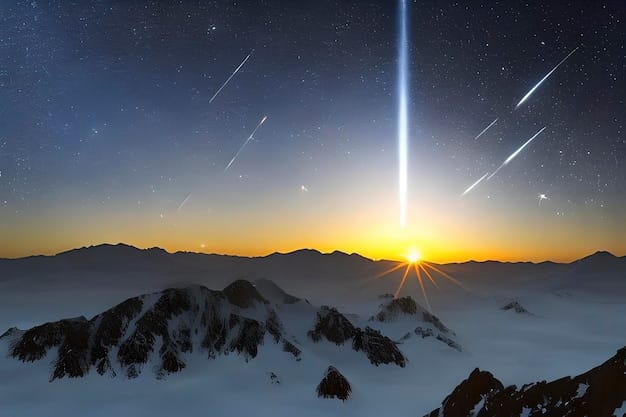The Quadrantids meteor shower is known for its bright and colorful meteors, making it one of the most anticipated astronomical events of the year. As we enter 2025, the Quadrantids are set to peak tonight, offering an excellent opportunity for both amateur and seasoned astronomers to enjoy this spectacular display. The Quadrantids are unique among meteor showers due to their sharp peak, which can last only a few hours. This year, the peak is expected to occur in the early hours of January 4, providing a thrilling experience for those willing to brave the cold winter night.
To effectively observe the Quadrantids, it is essential to understand the best practices for meteor watching. First and foremost, finding a location with minimal light pollution is crucial. Urban areas often have excessive artificial lighting that can obscure the visibility of meteors. Therefore, it is advisable to seek out rural areas or designated dark sky parks. These locations not only offer clearer views of the night sky but also enhance the overall experience of meteor watching.
Timing is another critical factor in successfully observing the Quadrantids. The meteor shower is expected to peak between midnight and dawn, with the highest activity likely occurring around 2 a.m. local time. Stargazers should plan to arrive at their chosen viewing location well in advance to allow their eyes to adjust to the darkness. It is recommended to spend at least 20 to 30 minutes in the dark before the peak to maximize the chances of spotting meteors.
Preparation is key for a comfortable and enjoyable viewing experience. Since January nights can be quite chilly, dressing in layers is advisable. Warm clothing, blankets, and even sleeping bags can help keep observers comfortable during the long wait for meteors to appear. Additionally, bringing along snacks and hot beverages can enhance the experience, making it a more enjoyable outing.
Once settled in a suitable location, it is best to lie back and take in the entire sky. While it is tempting to focus on one area, meteors can appear in any part of the sky. The Quadrantids originate from the constellation Boötes, but they can be seen radiating from various directions. Observers should allow their eyes to roam freely across the sky, increasing the likelihood of catching a glimpse of these fast-moving celestial bodies.
The Quadrantids are known for their bright fireballs, which can produce spectacular displays. Unlike other meteor showers that may feature smaller, fainter meteors, the Quadrantids often showcase larger and more vibrant meteors. The meteors travel at speeds of up to 41 kilometers per second, creating a breathtaking sight as they streak across the night sky. This year, with favorable viewing conditions, observers may witness up to 120 meteors per hour under optimal circumstances.
For those unable to venture out, various online platforms and observatories may provide live streams of the meteor shower. These broadcasts can offer an excellent alternative for individuals in areas with poor visibility or those unable to leave their homes. Following social media accounts of astronomy organizations can also provide updates and tips for viewing the Quadrantids.
As the Quadrantids meteor shower peaks tonight, it serves as a reminder of the beauty and wonder of our universe. Whether watching alone or with friends and family, this event can inspire a sense of awe and curiosity about the cosmos. Engaging with astronomy can foster a deeper appreciation for the natural world and encourage individuals to explore further into the mysteries of space.
In conclusion, the Quadrantids meteor shower is an exciting event that offers a unique opportunity for stargazers to witness the beauty of meteors in the night sky. By choosing a dark location, timing the viewing correctly, and preparing adequately, observers can enhance their experience and increase their chances of seeing these stunning celestial displays. As we welcome the first meteor shower of 2025, it is a perfect time to embrace the wonders of astronomy and enjoy the night sky.
